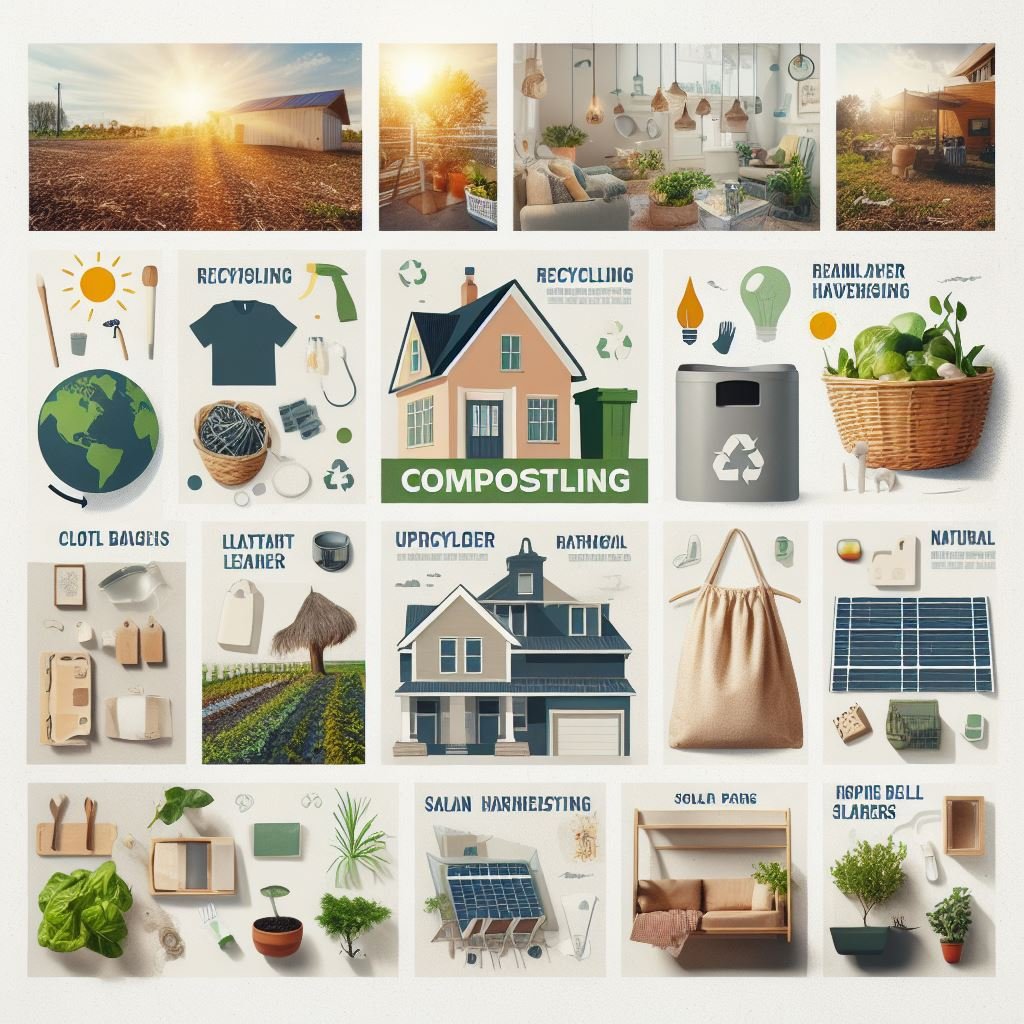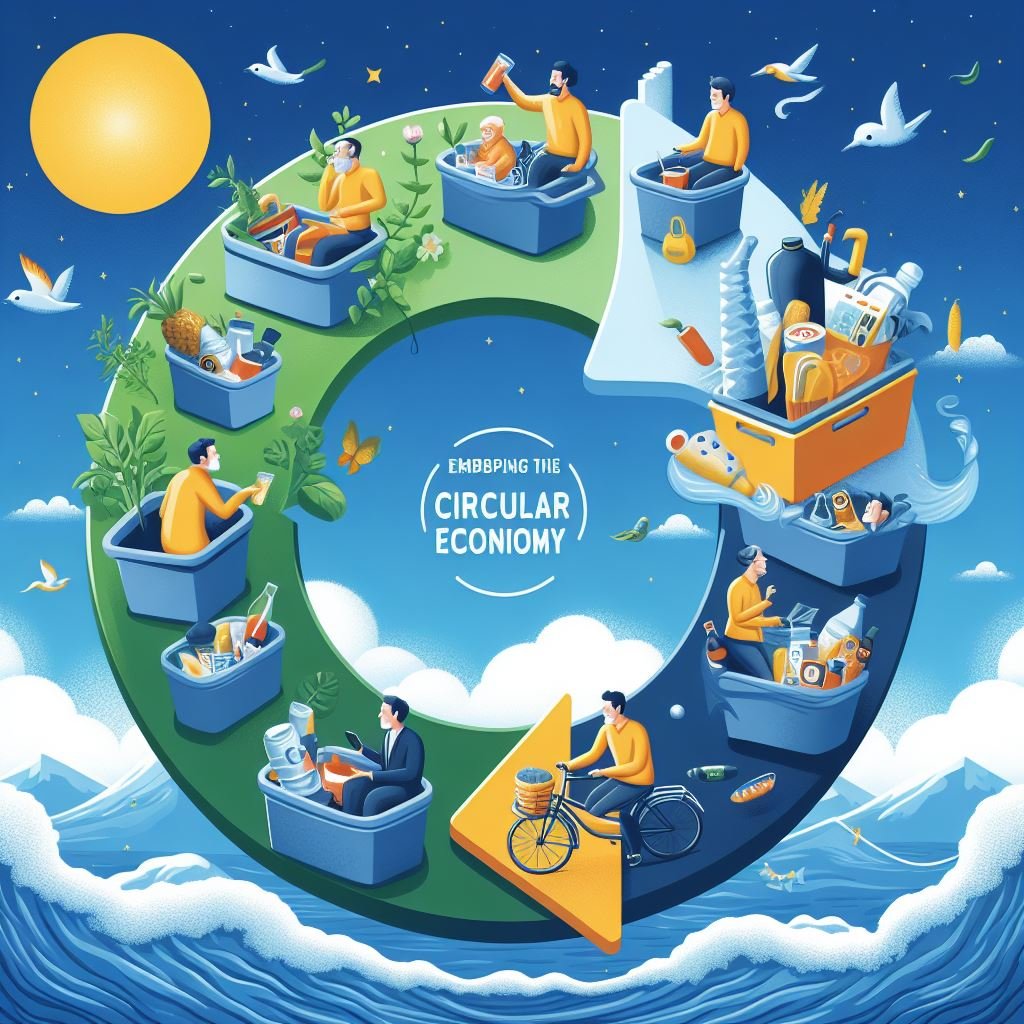
Introduction
In a world teetering on the edge of environmental challenges, our daily choices, reverberating beyond our homes, create a profound impact. Imagine this: a crowded city, full of skyscrapers and car horns, but beneath the surface lies a hidden crisis: zero-waste – a crisis that requires a radical shift in our lifestyles. The urgent need to adopt eco-friendly practices is not just a choice; it is a responsibility we owe to the planet Earth.
The importance of the topic
As climate change accelerates, the call for sustainable living resonates louder than ever. The importance of switching to eco-friendly practices goes beyond catchphrases. It is a crucial step towards a sustainable future where every decision, no matter how insignificant it may seem, contributes to the collective well-being of our environment. The need for a zero-waste living has never been more apparent.
Purpose of this post
This isn’t just another blog post; it’s a road map to a greener, more sustainable lifestyle. Our goal is clear: to provide you with actionable insights and practical tips and guide you toward creating eco-friendly havens that not only reduce your carbon footprint but also embrace the zero-waste ethos. Through this journey, discover how your daily choices can be catalysts for change, shaping a better future for generations to come.
Table of Contents
I. Understanding Eco-Friendly Living
II. Designing an Eco-Safe Home
III. Zero-Waste Practices for Homeowners
IV. Eco-Friendly Parenting: Nurturing Green Values
V. Navigating the eco-friendly market
VI. Embracing the circular economy: from consumer to contributor
I. Understanding Eco-Friendly Living
A. The basic principles of eco-friendly living
Eco-friendly living is based on simple but impactful principles. Consciously reduce, reuse, and recycle to reduce your environmental footprint. Adopt sustainable practices in daily activities and choose zero-waste options whenever possible. Conserving energy, water, and resources becomes second nature, fostering an environmental stewardship mindset.
B. Benefits to people and the planet
The benefits of adopting an eco-friendly lifestyle extend beyond personal well-being. Individuals who practice sustainable living often experience better health, lower stress, and an increased sense of connection to their surroundings. At the same time, the positive impact on the planet is profound, contributing to the preservation of biodiversity, mitigating the effects of climate change, and promoting an overall zero-waste ecosystem. This symbiotic relationship between personal and planetary well-being underscores the transformative power of green living.
II. Designing an Eco-Safe Home
A. Sustainable architecture and construction
Embark on an eco-friendly journey with sustainable architecture and construction. Choose renewable, locally sourced materials to reduce environmental impact. Incorporating innovative building designs that promote energy efficiency means harnessing the power of natural light and ventilation. The goal is to create spaces that seamlessly blend aesthetics and zero-waste principles, contributing to a sustainable built environment.
B. Energy-efficient home design
Revolutionize your living space with an energy-efficient home design. Integrate solar panels and harness renewable energy to power your home. Apply insulation techniques and energy-saving devices to reduce consumption. A carefully designed home, centered on energy efficiency, not only reduces environmental pressure but also translates into long-term cost savings. See the synergy between comfort and sustainability in every corner of your residence.
C. Smart home technologies for sustainability
Step into the future with smart home technologies that support sustainability. Embrace intuitive systems that optimize energy use and adapt to your lifestyle patterns. Smart thermostats, lighting, and appliances contribute to a smooth, energy-efficient home. Combine these technologies not only to enhance comfort but also to align with the zero-waste principles, creating a harmonious living space that adapts to your needs while respecting the planet. Elevate your home into a beacon of eco-friendly living.
III. Zero-Waste Practices for Homeowners
A. Limit single-use plastics
Start a plastic revolution at home by prioritizing [zero-waste] alternatives. Replace single-use plastics with reusable and eco-friendly options. Use stainless steel or glass containers, reducing your contribution to plastic pollution. Raise your awareness, make informed choices in line with a zero-waste lifestyle, and promote a sustainable environment for future generations.
B. Composting and organic waste management
Converting kitchen waste into gold by adopting composting and organic waste management. Create a nutrient-rich compost to enrich your garden soil. By diverting organic waste from landfills, you play a pivotal role in living with zero-waste. Embrace the natural cycle of recycling organic materials, promoting a healthier ecosystem within the confines of your home.
C. Recycling strategies for everyday items
Level up your recycling game with strategic approaches to handling everyday items. Clearly separate recyclables, ensuring proper disposal. Understand the recycling guidelines in your area and actively participate in them. By prioritizing recycling in your routine, you contribute significantly to the zero-waste goals and become a catalyst for positive change in your community. Make recycling an integral part of your commitment to sustainable living.

IV. Eco-Friendly Parenting: Nurturing Green Values
A. Sustainable choices for baby and children’s products
Embark on your eco-conscious parenting journey by making sustainable choices for baby and kid products. Choose zero-waste diapers, organic clothing, and non-toxic toys. Prioritize eco-friendly materials, making sure your choices align with a commitment to a healthier planet for your children and generations to come.
B. Teaching environmental responsibility to children
Empower your children with the essential lesson of environmental responsibility. Engage in open conversations about zero-waste living, pollution, and the importance of environmental conservation. Lead by example and display sustainable practices in your daily life. Instilling in them a sense of responsibility and a deep connection to the environment and raising a generation committed to green values.
C. Green family activities
Turn family time into green adventures with eco-friendly activities. Explore local parks, focusing on the beauty of nature. Plant trees together, enhancing the feeling of environmental care. Choose zero-waste picnics with reusable utensils and containers. Not only do these green family activities create lasting memories, but they also instill in your kids a love of nature and sustainable living.
V. Navigating the eco-friendly market
A. Choose sustainable household products
Navigate the market with a keen eye, and choose sustainable home products that align with your commitment to zero-waste living. Prioritize items made from recycled materials and support companies dedicated to eco-friendly practices. Make informed decisions that reflect your values and promote a marketplace that promotes sustainability.
B. Deciphering eco-labels and certifications
Arm yourself with the knowledge necessary to decipher eco-labels and certifications. Inspect products for recognized symbols that indicate environmental stewardship. Learn about zero waste certifications, ensuring that your purchases contribute to the circular economy. Navigate the market with confidence, supporting companies dedicated to transparent and sustainable practices.
C. DIY eco-friendly products
Embark on a journey of creativity and sustainability by making your own eco-friendly products. Explore DIY zero-waste alternatives to household items, from cleaning solutions to personal care products. Empower yourself to reduce your environmental footprint with sustainable, homemade choices. Navigating the eco-friendly market extends beyond purchasing; It involves active participation in creating a more sustainable future.
VI. Embracing the circular economy: from consumer to contributor

A. Understand the concept of the circular economy
Understand the essence of the circular economy, where products are designed for longevity and ease of recycling. Go beyond the linear model and embrace a zero-waste mindset. Understanding the cyclical nature of materials and advocating for sustainable practices that redefine our approach to consumption.
B. Ways to contribute at the community level
Transforming from a consumer to a community contributor through active participation in zero-waste initiatives. Organizing neighborhood cleanups, recycling campaigns, and educational workshops. Promoting a sense of shared responsibility and creating a local environment that prioritizes sustainability. Contributing to the circular economy at the grassroots level, where every action amplifies positive change.
C. Support eco-friendly companies
Increase your impact by supporting companies dedicated to zero-waste and sustainable practices. Choose products from companies committed to reducing their environmental footprint. Adopt a mindset that values ethical production and responsible consumption. As a consumer, your choices resonate in the marketplace, influencing the path towards a circular economy.
VII. Conclusion
A. The main takeaways:
In essence, let’s revisit the basic principles, focusing on their transformative impact on sustainable living. The central concepts of zero waste, eco-friendly choices, and conscious consumption are collectively moving us towards a more environmentally harmonious future. As we think about these key points, envision a lifestyle where every decision reflects a commitment to a healthier planet.
B. Call to action
Now it’s your turn. Start your zero-waste journey today. Implement small changes, one step at a time. Explore the links below for practical tips and further reading. Together, let’s turn our daily lives into a force for sustainable and eco-friendly living. The power to make a difference is in your hands.
Stay in the green ring! Subscribe to our newsletter for exclusive eco-living tips, zero-waste solutions, and sustainable home insights. Join us in building a healthier planet, one newsletter at a time. subscribe now!
VIII. FAQs
1. What are the basic principles of eco-friendly living?
Eco-friendly living is based on reducing environmental impact. Embracing the principles of zero-waste, energy efficiency, sustainable material choices, and conscious consumption. By adhering to these principles, individuals contribute to a healthier planet.
2. How can I incorporate eco-friendly practices into my home?
Transforming your home into an eco-friendly haven involves simple steps. Choose sustainable materials, choose energy-efficient appliances, reduce single-use plastics, and implement waste reduction strategies. Small changes combined have a big impact on sustainable living.
3. What is the circular economy, and how can I participate?
The circular economy focuses on reducing waste by designing long-lasting and recyclable products. Engage and understand product life cycles, support zero-waste initiatives, and contribute at the community level through recycling drives and sustainable practices.
4. How can I make my farming more eco-friendly?
Nurturing green values in parenting includes choosing [zero waste] baby products, teaching environmental responsibility, and participating in green family activities. By making sustainable choices, parents can instill a love of nature and sustainable living in their children.
5. How can I navigate the green market effectively?
Go green by choosing sustainable household products, deciphering eco-labels and certifications, and exploring DIY zero-waste alternatives. Support companies committed to eco-friendly practices and foster a market that aligns with your values for sustainable living.